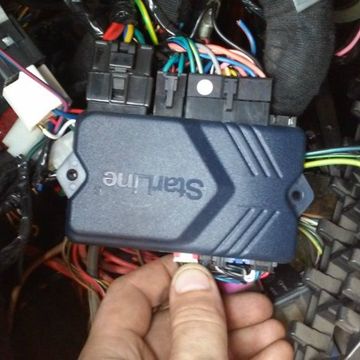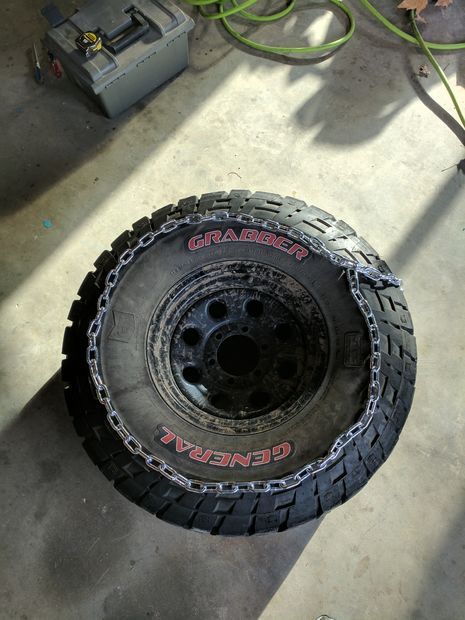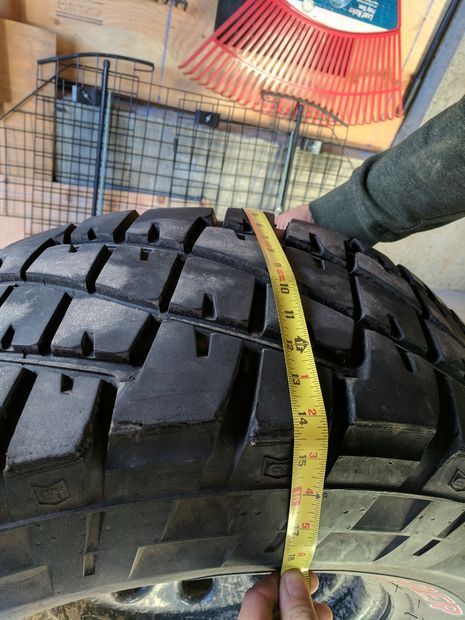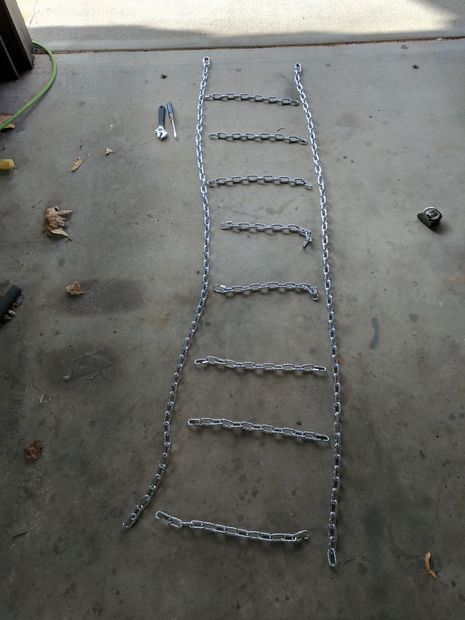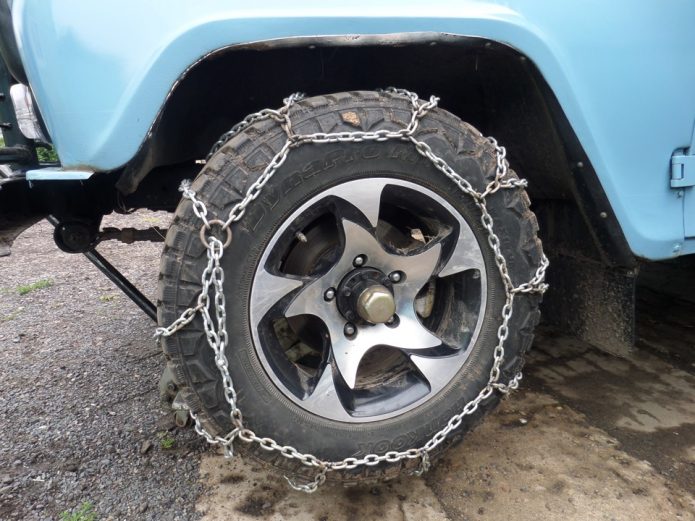
Do-it-yourself snow chains on a car: getting ready for the winter season in advance
Content
Often, car trips in winter can result in unpleasant consequences for drivers, as a result of which a tug has to be called for help. Unpleasant weather conditions such as snow, ice and rain reduce the car's cross-country ability. Especially for snow-covered sections of the tracks, special equipment is provided, which is called snow chains. When there is an obstacle ahead in the form of a section of a snowy track, chains put on wheels will help to increase the efficiency of overcoming such a distance. Such products can be bought at any auto shop, but not every driver can afford their cost. There is only one way out - to make snow chains with your own hands.
Content
- 1 Purpose of snow chains
- 2 Varieties and how they differ
- 2.1 Rigid lugs
- 2.2 Soft lugs
- 3 Varieties of lugs according to the geometric pattern
- 3.1 "Ladder"
- 3.2 "Rhombus"
- 3.3 "Honeycomb"
- 4 Anti-skid chains and bracelets: which is better
- 5 Making snow chains: sequence of actions
- 5.1 Required tools and equipment
- 5.2 Step by step guide
- 6 Features of installation on a car
- 7 Snow chain test
Purpose of snow chains
The cost of high-quality snow chains starts from 5 thousand rubles. Moreover, this does not require special knowledge and experience, since if you have the instructions indicated in the material, you can make products yourself.
Anti-skid chains (lugs) are products that are put on the drive wheels, increasing the cross-country ability of the vehicle. By installing such products on wheels, the driver receives the following benefits:
- High performance on snow-covered roads.
- Overcoming climbs and descents on sections of tracks with ice with a low probability of loss of control.
- Improving the quality of driving on snowy and icy road surfaces.
- Improving the rowing properties of the car when passing through muddy sections of the road.
It is important! Snow chains are installed on the wheels only when it is necessary to overcome a difficult section of the road. It is not recommended to use them constantly, as this negatively affects the vehicle.
The negative impact is due to the following factors:
- Increased load on the steering mechanism, as well as transmission elements.
- Impossibility of fast travel.
- Increased tire wear.
- Lack of comfort.
- Extraneous noise.
- Negative impact on the suspension elements.
In addition to everything, it is forbidden to operate a car with hooks on asphalt, as this contributes to the destruction of the coating. The products in question should always be in the trunk of the car in order to be able to use them if necessary. This applies not only to cars of the crossover and SUV class, but also to light mono-drive vehicles.
Varieties and how they differ
Many drivers, having familiarized themselves with the shortcomings of lugs, make a negative decision to purchase or manufacture them. However, sooner or later there comes a situation when the presence of chains does not hurt. Grousers are divided into several varieties. The main distinguishing parameters are: the material of manufacture and the geometric pattern of the chain product on the tire.
It is interesting! The above parameters have a corresponding effect on the vehicle and its off-road performance when driving.
Depending on the material of manufacture, lugs are divided into the following types:
- Rigid.
- Soft.
Rigid lugs
Hard types include products from the following types of metals: titanium, steel, aluminum. The strength of the product depends not only on the material, but also on the thickness of the links. The larger the size of the links, the higher the cross-country ability of the car. However, the indicators of the negative impact on the car are also higher.
On the one hand, thick chains increase the vehicle's cross-country ability, on the other hand, they negatively affect the suspension and steering rack.
The disadvantage of rigid products is a high noise effect, as well as accelerated tire wear. On chains of this type, it is impossible to reach speeds above 40 km / h. In addition, the massiveness and heaviness of the chains adversely affect the vehicle. Not all types of passenger cars can use rigid chains due to the small space between the wheel arches.
Soft lugs
Soft lugs are made from non-metallic materials such as rubber, polyurethane, and even plastic. To increase the strength of products, a method such as reinforcement is used. Soft lugs for cars are more forgiving, as they contribute less to rubber wear, and they are also almost silent. A car on such lugs can reach speeds of up to 80 km / h, while maintaining high-quality grip with the road surface.
Soft chains can hardly be called “chains” in the truest sense of the word, but they do the job when driving around the city just as well
Like hard chains, soft lugs have disadvantages that are clearly manifested when moving on ice. Soft chains perform well when moving around the city, without having a negative impact on the road surface. However, they are not able to ensure the effective passage of snowy areas and mud, so in such situations, only rigid chains should be used.
Varieties of lugs according to the geometric pattern
Depending on the geometry of the pattern, there are three types of snow chains:
- "Ladder".
- "Diamond".
- "Honeycomb".
Each option has its advantages and disadvantages, so let's look at them in detail.
"Ladder"
"Ladder" is a base in the form of longitudinally arranged branches. These branches are evenly distributed around the entire circumference of the wheel. To fix the chain on the wheel, the appropriate type of locks are used. Outwardly, this type of lug resembles a ladder, from where the name came from.
This version of the lug is one of the most popular, effective and in demand. Of the disadvantages of this type of chain, it is worth noting:
- parallel arrangement of chains on the wheel, so the car will dig in when overcoming snowy or soil areas;
- low lateral stability, which is also due to the parallel arrangement of the chain branches;
- heavy load on the transmission.
Despite the high raking properties, ladder-type chains are practically useless on snow-covered ground.
Chains of this type are recommended to be used only when it is necessary to overcome a risky section of the route. This option is one of the cheapest, so when a need arises, most drivers prefer this option without delving into its features.
"Rhombus"
The rhombus design of the lugs is a modernized design of the Ladder. For this, there are longitudinal branches that form a diamond-shaped pattern, excluding all the negative factors that are characteristic of the Ladder.
The geometric shape in the form of a rhombus is intended for the use of lugs when it is necessary to overcome a snowy or swampy area. The diamond shape is shown in the photo below.
Diamond shaped chains for increased strength and high traction
The diamond-shaped form of snow chains is popular among SUVs and crossovers, since this type of pattern on the lugs increases the passable qualities of the car several times. This is especially true for snowy and icy road sections.
"Honeycomb"
An analogue of a rhombus are “honeycombs”, which have transverse branches similar to a rhombus, however, they are additionally connected by straight connectors. Rhombus and honeycomb are improved types of lugs, when using which the contact of products with the road surface occurs constantly. This is a big plus for both rubber and transmission, so when making lugs, it is recommended to pay attention to the last two models.
"Honeycombs" provide constant contact with the road, therefore giving the car a high level of lateral stability
It is also worth noting that when buying snow chains, you must consider their size. Grousers manufactured at the factory are divided not only in size for wheels, but also depending on the type of car.
Anti-skid chains and bracelets: which is better
The analogues of chains for cars are bracelets, which are a pair of segments of chains fixed on wheels with belts. The chain is located on top of the bar, and the belt is located in the hole between the disc. At the same time, the bracelet, unlike the chain, is firmly tightened on the tire, which allows the chain to be located in one place.
To increase efficiency, it is recommended to attach at least three anti-skid bracelets to one wheel
Usually three bracelets are installed on one wheel, which is enough to reach a hard surface, while creating friction and repulsion of the car. Unlike chains, bracelets have the following advantages:
- Speed and ease of installation. If the chains are recommended to be installed only before overcoming a snowy or swampy area, then the bracelet can be installed even when the car is stuck.
- Compact, as they do not take up much space in the trunk, unlike chains.
- No need to jack up the wheel.
- Versatility. If the chains are designed for a certain wheel diameter, then the bracelets are suitable for any wheel size.
- Unlike chains, bracelets are several times cheaper.
- Long service life.
Like chains, bracelets are divided into hard and soft. One of the cheapest options for bracelets are plastic products. They are suitable for any type of car: from small cars to SUVs, so every driver can afford them.
Bracelets, like chains, are divided into hard and soft
What is the difference between chains and bracelets? Numerous observations of drivers show that the chains have a better grip on the road surface, which has a positive effect on the patency parameters. Chains can be used to overcome snowy and icy areas until they end. Bracelets can only be used for short-term use up to 5-10 km.
It is important! If one link breaks on the chain, then this poses a threat to the car body. Damage to the paintwork may occur, which ultimately contributes to the formation of a corrosion site.
When it is known what chains and bracelets are, we can conclude:
- If you plan a long road through swampy, snowy and icy terrain, then it is recommended to use chains.
- Bracelets are used only when rare trips are planned around the city or outside it in bad weather. Even if during the trip you forget to wear a bracelet, you can do it at any time, even if the car gets stuck.
Making snow chains: sequence of actions
Many motorists value their work, so they resort to solving the problem with the lack of lugs on their own.
Required tools and equipment
Before performing the corresponding work, you must first make sure that the appropriate materials and tools are available. You can watch the process of making snow chains on the video, but the disadvantage of the videos is the lack of information about the necessary equipment.
To make a simple Ladder chain, you will need the following materials:
- Steel chain. The thickness of the reinforcement must be at least 5 mm.
- Carabiners with a clutch and a thread. Products with latches are not suitable for the manufacture of a lug.
- Chain tensioner.
- Bolts, nuts and washers.
- Hooks.
For the manufacture of snow chains, carabiners with a clutch and a thread are required
The main material is a chain, the length of which for two medium wheels with a diameter of R15 must be at least 15 meters. Buying a chain separately and making a lug out of it yourself is much cheaper than buying a finished product.
To make lugs, you will also need a set of tools:
- Vice;
- Bulgarian with a circle for metal;
- Roulette;
- A hammer;
- Wrenches for tightening bolts and nuts.
As you can see, the stock of materials and tools is insignificant, so after preparation, you can start making snow chains.
Step by step guide
The manufacturing procedure involves the following steps:
- Tire circumference measurement. This is necessary in order to make two rings from a chain of the appropriate diameter. Here is one important point: the length should be such that the chain lies on half the width of the bar, as shown in the photo below.

To determine the length of the chain, it is necessary to close the chain on the imaginary middle of the wheel
- The required chain length is cut off, after which the chain segment is connected using threaded carabiners. The second segment of the chain is prepared of the same length.
- Manufacturing of cross links. Using a tape measure, a measurement is taken, after which a decision is made on the required number of links. The greater the number of such links, the better the patency, but even this will require a longer chain length. The number of links is also determined depending on the size of the wheel. Their optimal number is 8 pieces.

To determine the width of the transverse links, it is necessary to take a measurement with a tape measure
- All links must be the same size. At both ends of the links you need to fix a carabiner. Bolts, nuts and washers can be used instead of carabiners.

In the absence of carabiners, the links can be fixed with bolts, nuts and washers
- The length of the links should be such that the chain on the wheel is well tensioned. If the length is longer, then they can fly off.
- When the required number of links is ready, you can start assembling. The assembly must be done so that each link is located at the same distance from the previous one.

For efficient use of chains, the distance between adjacent links should be approximately the same.
- When the product is assembled, you can try it on the wheel. To put snow chains on the wheel, you will need metal springs or rubber. The springs can be terminated with hooks to facilitate installation of the product.

To simplify the installation of chains, rubber bands with hooks at the ends are used.
- Instead of springs and rubber, other elastic materials can be used as tensioners. The main condition is that the products must securely fix the snow chain on the wheel. The result is a product of the following form:

With proper observance of the instructions, the following circuit design should be obtained
Such a homemade device does not take up much space in the trunk, and it will take no more than 2 hours to make it. By analogy, a chain is made for the second wheel. For all-wheel drive SUVs, chains must be worn on all wheels. On mono-drive vehicles, the chains are located exclusively on the drive wheels.
Features of installation on a car
Making chains is only half the battle. Now you need to properly install them on the car. There are several ways to do this. The first of these involves jacking up the car. To do this, the driver must perform the following manipulations:
- Before an obstacle, you must stop on a hard surface, then set the car at first speed and squeeze the handbrake;
- Using a jack, you need to hang out the part of the car on which you plan to install the chain;
- As soon as the wheel is hung out, you should proceed with the installation of the lug;
- This process usually takes about 10-15 minutes for one wheel. In this case, you need to make sure that the chain is securely fastened.
The product is installed in the same way on the second side and, if necessary, for all four wheels. The second option involves installing a chain without raising the wheels:
- You need to stop, and then place chains on both sides in front of the wheels.
- Run on the chains to the middle of their size.
- Fasten the product from the inside with a hook or carabiner.
- Straighten each link, then connect the tension adjuster.
In the absence of a jack, it is possible to run into chains lying on the ground
This option seems simple, but in reality it is not. After installing the chain on the wheel, you need to drive a few meters, and then adjust the tension. Then you can storm the obstacles.
Snow chain test
The manufactured device must be tested in operation to ensure its reliability and effectiveness. It is worth remembering that the effectiveness of the product depends not only on the number of links available, but also on the size of the chain used. The larger the chain size, the higher the quality of the car's patency.
To test the snow chain, it is enough to wait for bad weather, and then rush to an area where there is no traffic. After installing the chain on the drive wheels, it is necessary to overcome various obstacles in the form of snow slides, icy sections of the road surface, as well as swamps. After overcoming each obstacle, it is necessary to check the features of the location of the product on wheels.
It is important! During testing, damage to chain links may occur, so be sure to check their condition regularly.
If after testing the results are pleasing to the eye, then you can try to overcome obstacles without chains on wheels. The result is sure to amaze, and snow chains will become an indispensable attribute in the trunk of your car.
As a conclusion, it should be noted that snow chains are not installed at all in order for the car to stand out on the road. In addition to improved cross-country ability, chains ensure the safety of the driver and passengers on the road in adverse weather conditions. With the presence of such devices on the wheels of a car, you have a chance to overcome an obstacle or escape from a snow drift.
Discussions are closed for this page

